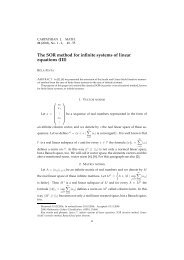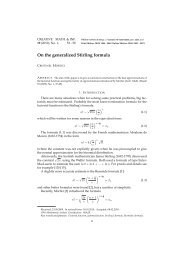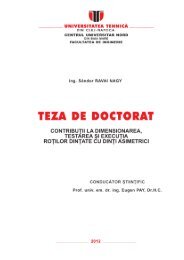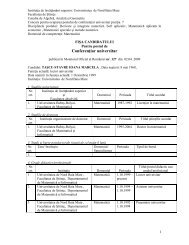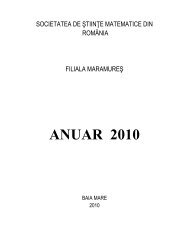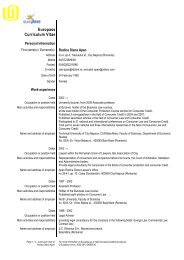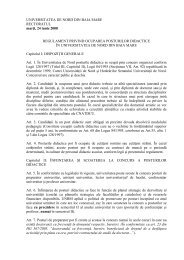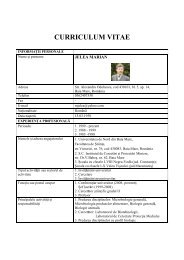Vol 3 (1) 2011 - UBM :: Departamentul de Chimie-Biologie
Vol 3 (1) 2011 - UBM :: Departamentul de Chimie-Biologie
Vol 3 (1) 2011 - UBM :: Departamentul de Chimie-Biologie
Create successful ePaper yourself
Turn your PDF publications into a flip-book with our unique Google optimized e-Paper software.
Carpathian Journal of Food Science and Technology <strong>2011</strong>, 3(1), 7- 11<br />
2. Materials and methods<br />
Milk samples were analyzed using the<br />
ELISA method (Enzyme-linked<br />
immunosorbent assay) and interpreted<br />
according to the instructions of the<br />
standard or of the analysis kit (R-Biopharm<br />
AG, Ridascreen for AFM 1 , Art Nr.<br />
R1111).<br />
39 <strong>de</strong>terminations were ma<strong>de</strong> using<br />
this ELISA kit, samples and standards<br />
were analyzed in duplicate.<br />
The concentration of M1 Aflatoxin in milk<br />
samples was calculated using the following<br />
equation:<br />
A<br />
%Ab = 100 (1)<br />
A<br />
where:<br />
A – absorbance standard, %<br />
A 0 – Absorbance zero standard, %<br />
0<br />
The zero standard is thus ma<strong>de</strong><br />
equal to 100 % and the absorbance values<br />
are quoted in percentages. The values<br />
calculated for the standards are entered in a<br />
system of coordinates on semi logarithmic<br />
graph paper against the aflatoxin M1<br />
concentration [ng/l].<br />
In or<strong>de</strong>r to obtain the aflatoxin M1<br />
concentration in ng/l actually contained in<br />
a sample, the concentration read from the<br />
calibration curve must be further<br />
multiplied by the corresponding dilution<br />
factor.<br />
All the procedures for the ELISA<br />
analysis are shown in Figure 1.<br />
Figure. 1. Procedures for the ELISA analysis<br />
m- sampling quantity ; V 1 – the methanol volume used for extraction ; V 2 - the supernatant<br />
volume obtained through centrifugation; V 3 - the volume of the tampon solution for dilution ;<br />
V 4 –the volume of solution used in the analysis ; V 5 – the volume of tampon solution for blank<br />
;V 6 –the volume of solution conjugated ; V 7 -the volume of tampon solution for standardizing ;<br />
V 8 – the volume of substrata solution ; V 9 – the volume of H 2 SO 4 solution for stopping the<br />
reaction ; -uncertain<br />
8



